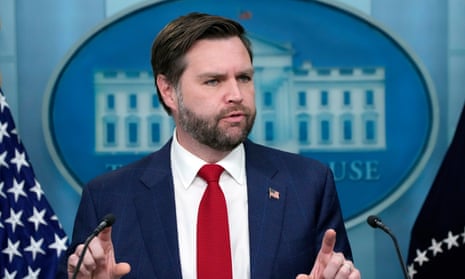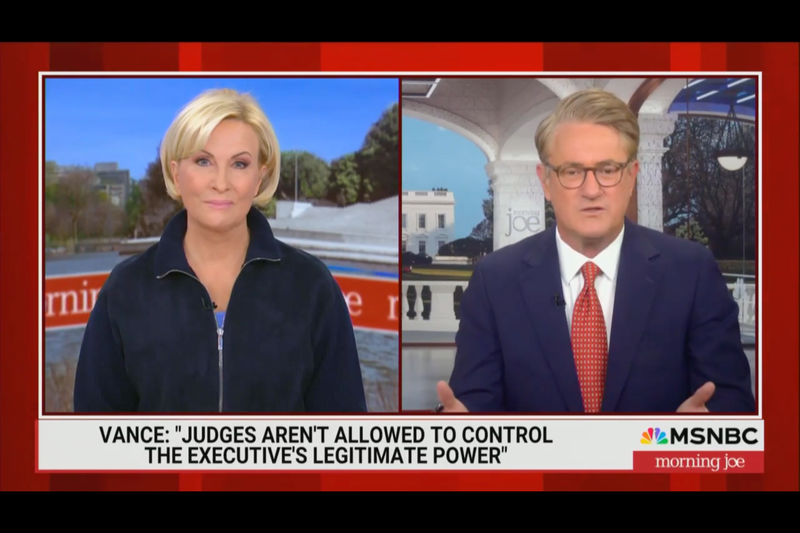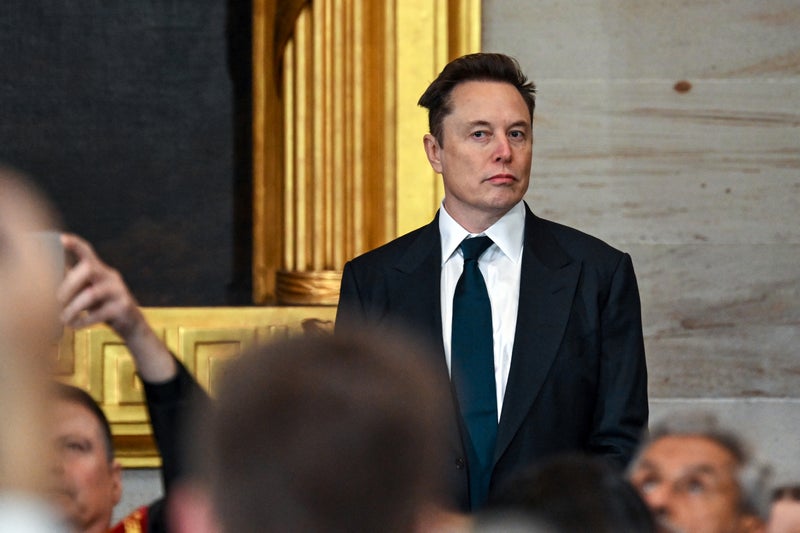Legal experts warn the administration’s illegitimate power grab upends democratic checks for a slide in to dictatorship. The deceptively legalistic camouflage rendered the words almost banal – while still clearly communicating their ominous undercurrent. “Judges aren’t allowed to control the executive’s legitimate power,” wrote vice-president JD Vance, a graduate of Yale law school, on X as he waded into an escalating tug-of-war between his boss, Donald Trump, and the US federal courts.
![[A person carrying a sack with a US flag on it from a truck with similar sacks]](https://i.guim.co.uk/img/media/4ed385b7f4f4af91eb123dbdb567e0ce5a73ceae/0_0_3000_2027/master/3000.jpg?width=445&dpr=1&s=none&crop=none)
Whatever it lacked in rhetorical flourish or polish, the post represented an unambiguous rejection of long-established constitutional norms while offering no supporting legal basis, some scholars say. It also amounted to an implied statement of intent to ignore court rulings which, if enacted, would upend the US government’s intricate system of check and balances and lay the ground for dictatorship, they warn.
“The vice-president has absolutely no basis in the constitution and its historical development for making this claim,” said Bruce Ackerman, a law and political science professor at Yale University, Vance’s alma mater. “It repudiates the fundamental principle of checks and balances.”. Vance’s intervention was triggered by a series of court rulings that have slowed Trump’s pell-mell rush to grab the levers of powers across the US government since returning to the presidency on 20 January.
Trump, Ackerman says, has acted outside his legitimate power in arbitrarily shuttering institutions including the Consumer Financial Protection Bureau, the National Labor Review Board and the Equal Employment Opportunities Commission, the latter two of which he has rendered inoperable by firing sitting Democratic members while not appointing replacements. He also summarily fired 17 inspectors general – who are charged with rooting out government waste, fraud and abuse – across the executive branch without giving Congress the statutory 30 days notice.
“It is not the case that the president can dominate the policy making of all institutions in the executive branch,” he said. “And in particular, the president can’t fire people or members of these commissions. Even less, can he through unilateral action, simply destroy two independent commissions.”. But the courts have issued a series of legal setbacks to Trump’s crusade to remold American government, as several judges have ruled that executive orders from the White House have ignored existing law or – in the case of an attempt to revoke birthright citizenship – violate the constitution.
Other rulings included an order halting and partially reversing the mass firing of thousands of staff at USAid – the now-shuttered foreign assistance agency – and another reversing the sudden freezing of trillions of dollars of government grants and loans. Sunday’s social media post appeared particularly targeted at a ruling by US district court judge Paul Engelmayer, who had issued a temporary injunction the previous day stopping Elon Musk’s self-styled “department of government efficiency” (Doge) from accessing the treasury department’s payment system – a vast database that contains the personal details of millions of Americans and disburses trillions of dollars via an array of government programmes.
Underlying Vance’s response – though not stated explicitly – was the threat that Trump could simply ignore court rulings he did not like and apply his power as he sees fit. Vance has made such arguments in the past, even extending the argument to hypothetical negative rulings by the US supreme court, where some of the current disputes are expected to end up – and where Trump has the advantage of six-to-three conservative-liberal majority.
Speaking on a podcast in 2021, when he was a candidate for the US Senate, Vance painted a scenario resembling the one widely thought to be in danger of coming true now in Washington by saying that Trump should “fire every single midlevel bureaucrat, every civil servant in the administrative state, replace them with our people”. That was likely to end up in courtroom battles, he said - in which case Trump should defy adverse rulings: “When the courts stop you, stand before the country like Andrew Jackson did and say: ‘The chief justice has made his ruling. Now let him enforce it.’”.
Ackerman, the author of We The People, an acclaimed three-volume history of the constitution, derides that approach as “the advocacy of supreme presidential lawlessness”. Some analysts have speculated that Trump’s attempts to seize unfettered control of the bureaucracy is based on the unitary executive theory of the presidency, which argues in favour of an expansive interpretation of presidential power.
The theory asserts that the president has sole authority over the executive branch of government and aims to centralise control in the White House. Based on the constitution’s “vesting clause”, which states that “the executive power shall be vested in [the] president”, it has been favoured by conservative justices on the US supreme court in recent decades and championed by rightwing thinktanks, including the Heritage Foundation, the main architect of the radical Project 2025 blueprint which charted many of Trump’s current attacks on the bureaucracy.






















